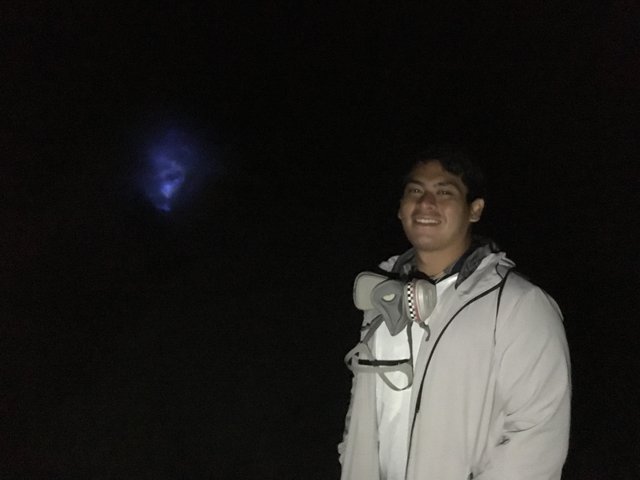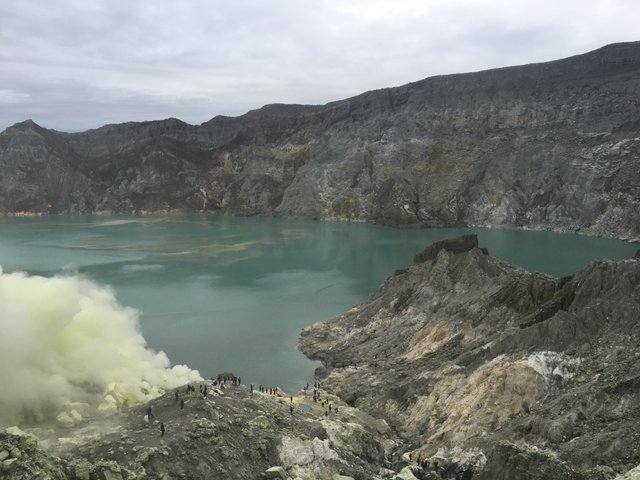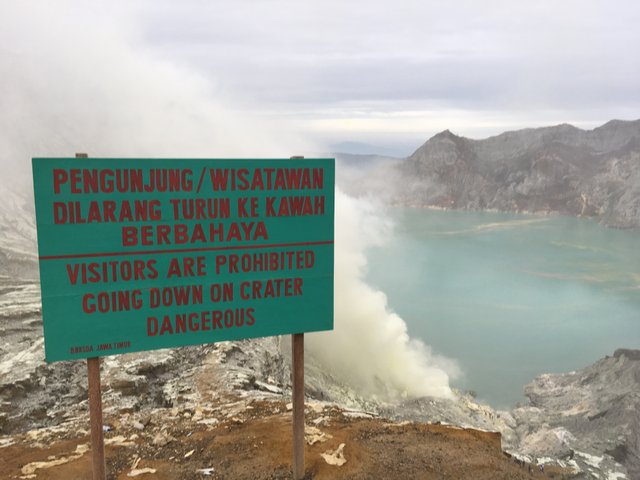
Located in the Banyuwangi Regency of East Java, Indonesia, Kawah Ijen stands at 2999 meters high and is a sight to behold and a unique experience altogether.
The climb (which was more of a steep walk) started at around 1 am which took around 2 hours to reach the peak of the volcano. From this point on, it was a grueling climb down to the crater lake which was 900 meters down. It wouldn’t have been so bad, but you were required to wear a gas mask because of the sulfur gases in the area and it was also dark. This climb took around another hour also considering the flock of tourist that caused a couple of delays. We reached the crater at around 4 am and waited for the sulfur gases to clear to see the blue flame which was a marvel that only the eyes can see. Sadly during my hike, the weather was bad which made the blue flame dim and harder to see due to the strong winds causing the sulfur smoke to obstruct the view.
Once the sun rose, we were able to see the beautiful turquoise colored caldera lake of Ijen but don’t be fooled because this is the world’s largest highly acidic lake. A continuous stream of sulfur gases blasts from sides of the lake. These hot gases travel underground in the absence of oxygen. If they are hot enough when they emerge from a vent, the sulfur ignites upon contact with oxygen in the atmosphere. Often the temperature is low enough that the sulfur condenses, falls to the ground as a liquid, flows a short distance, and solidifies. This is also the view that you will see as you go back up from the crater and upon reaching the entrance to the path to the crater, I saw a sign that said that apparently visitors are not allowed to go to the crater which made me feel like somewhat of a rebel.
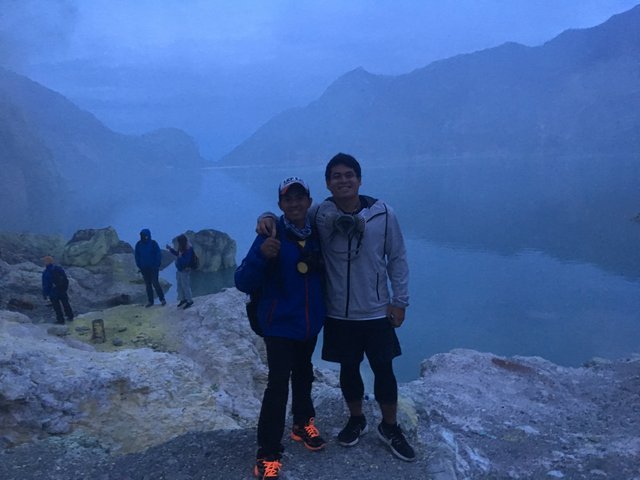
Just something that I want to call out. My guide, shown in the image, is part of the Ijen Miners community. These people mine the sulfur rocks in the crater daily (except when they are asked by tourist to be guides, which is something that they really appreciate). They carry sulfur rocks 900 meters up from the crater and then down to the pick-up area inside woven bamboo baskets that they carry over their shoulders. These baskets can contain around 90-100kg of sulfur rocks and are only being bought from them at around 5 USD per 100kg and on average, they are only able to make 1 trip a day, 2 if it is a good day. I personally tried to carry one of their baskets and my goodness they were heavy. I may have been able to smile in the photo, but I could barely move my legs. I can’t imagine doing something like that every single day up and down the volcano. Not only do they endure the excruciating pain from carrying the rocks these miners also do this with little to no protection at all. My guide even showed me the permanent wounds on his back that was caused by 17 years of working as a miner. They are exposed to the sulfur gases, the heat of the sun during the day and the cold weather at night. I truly did admire these guys for the hard work that they were doing, and I couldn’t help but feel bad that they were being paid so little for it. My guide, Sanur, says that it’s a sacrifice he is willing to make just as long as his children are able to finish their schooling and not have to walk the path that he did.
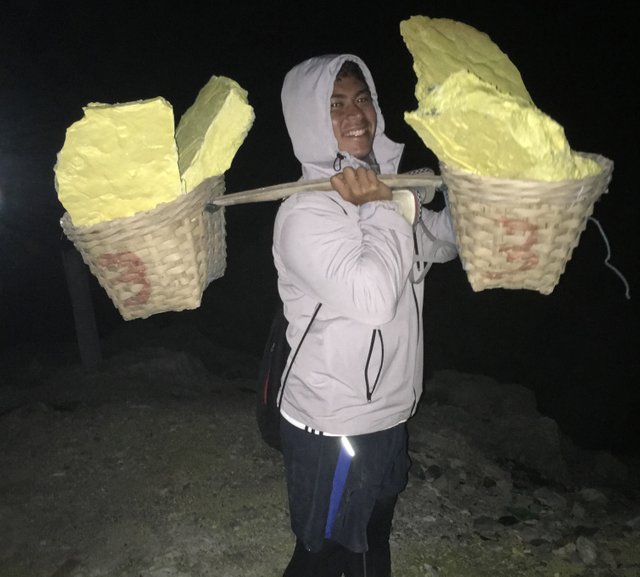
Overall it was a unique experience for me. It was also my first time to do a solo hike and boy was it filled with amazing views. Being able to also see the working conditions of the miners made me appreciate the things I had in life. These are things that I will never forget.
